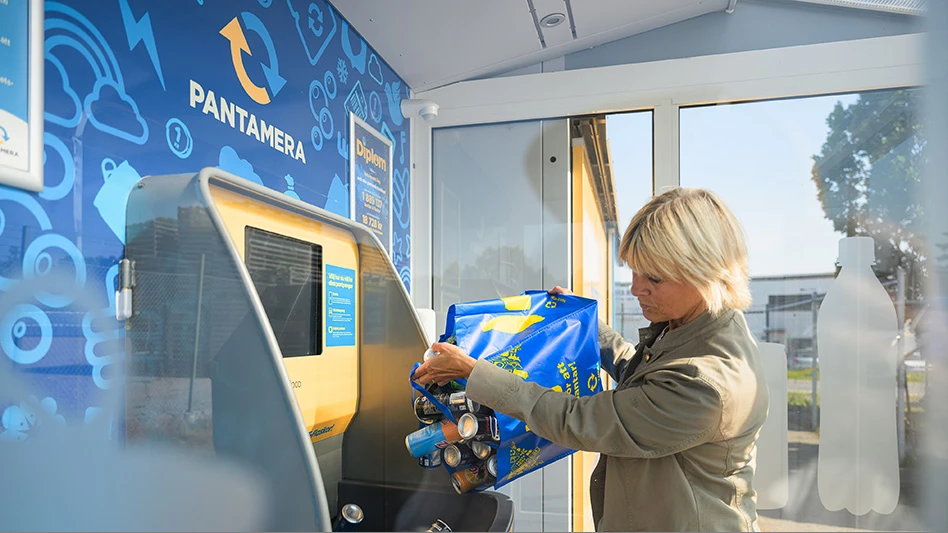The growth in global recovered paper consumption is pre-dominantly led by China. Reason No. 1: China’s continuing strong economic growth.
With the country’s rapidly expanding consumer goods industries increasingly in need of packaging materials for a variety of commodities intended for sale in both export and domestic markets.
At the same time, the country’s communication business is facing an explosive growth phase, with publication and office papers strongly benefiting from the situation.
These developments have resulted in large-scale investments in new paper and board making capacity, particularly for containerboard, boxboard, newsprint and other communication papers in China.
DEMANDING TIMES
An essential part of the investments in China are based on the use of recovered paper—which is a logical choice in a country with limited forested land and already relatively well-tapped non-wood fiber resources.
Of some 24 million tons annually of currently known global investment in additional paper making capacity using recycled fiber for the period 2005-2009, nearly two-thirds (or close to 16 million tons) is planned for China.
Led by the very strong expansion in China, world recovered paper demand is expected to grow by an average of 4.4 percent or more annually until 2012. Recovered paper will soon account for more of the fiber content of global paper and board manufacturing than virgin pulp.
| Cover to Cover |
|
The entire "Outlook for Recovered Paper Markets – Increasing Competition for Recovered Paper" report can be ordered online at www.globalrecyclefiber.com or by contacting the report’s authors Bill Moore and Esko Uutela at (770) 518-1890 or +49 8151 29193, respectively. The fourth edition of the strategic business analysis focuses on future trends and developments in the use and supply of recovered paper, according to Moore. Coverage in the report is global, with emphasis on developments in all the major regions: Western/Eastern Europe, North/Latin America, Japan, China, Asia Far East, Near/Middle East, Oceania and Africa. "China has been the dominating factor in the global recovered paper business in the past few years, with their imports exceeding 17 million tons in 2005. But this is not the only major global issue at the moment," according to the report’s authors. "In the report we focus on many additional issues, such as European developments that are characterized by industry restructuring efforts, with a major impact on recovered paper demand and export availability; U.S. paper and board industry’s ability to survive in the face of international competition and the consequences for recovered paper trading; the new business potential in emerging markets such as India, Turkey, Indonesia, Vietnam and the Ukraine; and the global price mechanism with Earlier editions (2000, 2002 and 2004) were used by consumers, processors, traders, equipment suppliers to the recycling industry and organizations involved in fiber recycling, according to Moore. He adds that the report "provides a unique and definitive insight into global developments in future recovered fiber supply/availability and markets, including detailed statistical appendices of more than 100 pages." |
Global consumption of scrap paper will increase from an estimated 187 million tons in 2005 to some 252 million tons in 2012. The relative growth of recovered paper will slow down from the 5.3 percent or more annual growth recorded since 1990, but the annual volume increment of recovered fiber use will increase from 6.7 million tons per year (1990-2005) to more than 9 million tons per year (2005-2012).
This is just one of the main findings of "Outlook for Global Recovered Paper Markets – 2006 Edition," a new study published by EU Consulting of Starnberg, Germany, and Atlanta-based Moore & Associates.
REAPING THE HARVEST
North American paper and board markets are expected to be flat and partly declining (newsprint in particular), which means that there are limited needs to build recovered papermaking capacity in that market.
Total recovered paper consumption is expected to slightly decline in the region. The supply side has been rather flexible for generating additional supplies, provided that there has been demand for the material. (Some new methods are being credited, including single-stream collection).
Currently, any additional demand is originating outside North America, and export opportunities are pushing recoveries to higher levels. As a result, North American net exports will continue to grow and are being forecast to exceed 23 million tons by 2012.
The European paper and board industry is experiencing its strongest-ever restructuring phase. This is most remarkable in the containerboard business, but is also occurring to some extent in other segments, too. A considerable amount of efficient and quality-driven new capacity was built in recent years, and currently several older mills and machines are not competitive and are being shut down.
Europe’s traditionally high net exports of paper and board finished products have limited growth prospects, as new capacities have come on stream in emerging markets, including China. More than 2.5 million tons per year of recovered papermaking capacity has recently been closed. European consumption of recovered paper will continue to grow, but recovery will grow even more. Europe’s net exports of recovered fiber are expected to double from 2005 to 2012.
In Japan, the 60 percent recycling target set for 2005 was exceeded, although only slightly. Paper and board markets are rather flat with limited expansion prospects. But Japanese companies still continue to increase recycled fiber content in communication papers—which means investments in new de-inking plants. Japan’s export surplus in recovered paper will grow, but most of it will be in packaging grades, such as OCC and mixed grades.
PATTERNS
The basic global trade pattern in recovered paper continues to be rather simple: the industrialised regions of North America, Western Europe, Japan and, to a lesser extent, Oceania, all have export surpluses of recovered paper and supply the emerging and developing countries.
The possibilities for increasing supplies are positively influenced by the vast quantity of packaging materials imported together with all kinds of consumer goods from the emerging markets, including China.
China and Asia Far East are the main destination for recovered paper surpluses from the industrialised countries. China’s exports of packaging materials have been estimated in some sources to amount to 20 million tons per year on the high end and perhaps 10 million to 15 million tons per year, according to some other estimates. Considering this, China’s "true" recovery of its own scrap paper would be close to the 40 percent.
China’s recovered paper imports exceeded 17 million tons in 2005, and there is no sign of any break in this trend in the first months of 2006. It is likely that China will import some 20 million tons (or even slightly more) recovered paper in 2006. By 2012 we expect the import quantity to approach 37 million tons per year.
In the rest of Asia, the growth of imports will move from Southeast to Southwest Asia, particularly to India and neighboring populous countries. India is expected to become another major Asian recovered paper importer, although the growth in imports has so far remained weaker than in the remarkable case of China.
PRICE PRESSURE
There are many reasons to believe that long-term prices of recovered paper are on an upward move. Pulp prices are moving in that direction, and rising energy costs are also creating pressure for recovered paper price increases.
Even simple long-term trend analyses suggest an upward trend for all recovered fiber prices, except perhaps sorted office paper (SOP).
The packaging grades (OCC and mixed paper) show the strongest annual growth, which is not surprising, as OCC and mixed grades will enjoy continuing strong demand growth, notably because of several new packaging paper and board machine projects in Asia, particularly in China where investments will peak in 2007.
This may cause even stronger price increase pressures, and prices are likely to increase even more than the long-term trend would suggest.
Co-author Esko Uutela is the principal of paper and pulp industries consulting firm EU Consulting, Starnberg, Germany, and can be contacted at euco.uutela@t-online.de. Co-author Bill Moore is a principal with Moore & Associates, based in Atlanta, and can be contacted at MARecycle@aol.com.
Get curated news on YOUR industry.
Enter your email to receive our newsletters.

Explore the October 2006 Issue
Check out more from this issue and find your next story to read.
Latest from Recycling Today
- Nucor expects slimmer profits in early 2025
- CP Group announces new senior vice president
- APR publishes Design Guide in French
- AmSty recorded first sales of PolyRenew Styrene in 2024
- PRE says EU’s plastic recycling industry at a breaking point
- Call2Recycle Canada, Staples Professional expand partnership
- Circular Services breaks ground on north Texas MRF
- Tariff uncertainty results in choppy nonferrous scrap flows





